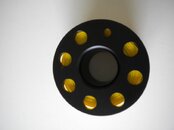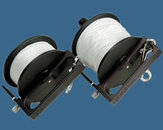This is an awesome board and I appreciate everyone's response - it looks like most of y'all are saying yes (ha ha), I should have all this stuff (except the float).
So, it looks like I'll be making another trip to the LDS before I fly out. Since it's going to be rainy, I think the flashlight is a good idea. During my OW dives, I did see people getting stuck in kelp, so I don't know why I didn't already go out and buy a knife. But I can see how a knife could be really crucial. A whistle might be useful to get your buddy's attention, maybe? If not the boat, and it's cheap, so I might as well get that. And the dye, and maybe a sausage without the spool, for now.
Since you're a new diver on a vacation dive, I would say the priorities are the safety sausage and some sort of cutting tool. If you have enough time to learn how to shoot a DSMB from depth before your trip, that's great and you can get a reel as well. You can seriously injure yourself shooting a bag if the line gets entangled around your gear or arm and sends you up fast. Being able to inflate the sausage once you're at the surface is much better than nothing.
A lot of BCs have a small whistle attached to the inflator hose with a quick tie, which may be the case with your rental BC.
A cutting tool is just kinda standard. I personally started with trauma shears in a sheath and then added a small knife. People are free to get the leg machetes you see some divers strut around with, but should be aware that they may be required to use that giant blade around kelp or line entangled around their regulator first stage, which would be a tricky maneuver considering all the hoses.
I find a small backup light increases my enjoyment because I get to peek around in dark holes, but I wouldn't consider it absolutely necessary. Even I don't have that complete list; a mirror has been on my "things I need to buy" list for over a year now. It really all depends on your degree of risk tolerance and how much gear you want to carry that you may never need. I might use my DSMB and small light every dive, and find often some fishing line on the bottom that I decide to clean up using my knife, so those are no-brainers for me. Everything else is dependent on how I judge the risk of a particular dive and what I think the appropriate safety measures are.
What didn't occur to me before I started the PADI course was that diving is a really expensive hobby. Is there such thing as a poor diver? Including the course and the gear I have so far, I think I've spent around $900 in the last month.
All divers are poor because they've spent all their money on gear. You'd shudder to learn what people who get into underwater photography or technical diving spend.






